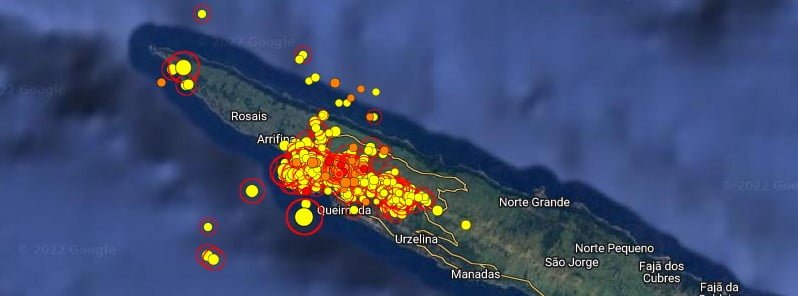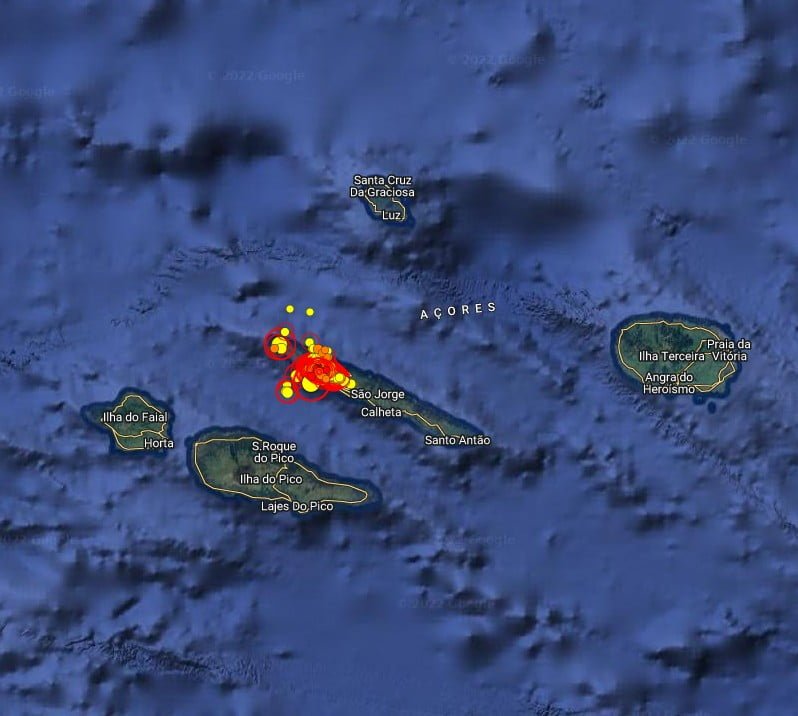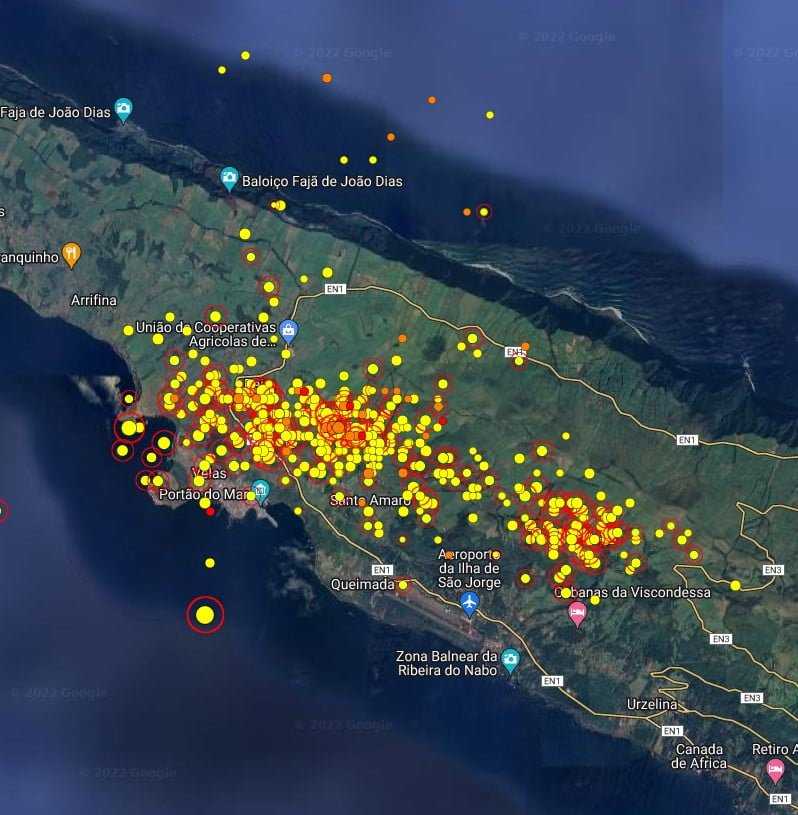Seismovolcanic crisis continues at São Jorge Island, Azores – 33 000 earthquakes in 2 months

The seismovolcanic crisis at the Manadas volcanic fissure system in the NW part of São Jorge Island, Azores has entered its third month on May 19, 2022. A notable change in seismicity was reported on April 6, when volcano-tectonic earthquakes were detected, suggesting the movement of magma at depth. The last confirmed eruption of this volcano took place in 1808 (VEI 1).
According to the Center for Seismovolcanic Information and Surveillance of the Azores (CIVISA), the earthquake swarm at Manadas volcanic fissure system started at 15:05 UTC on March 19 with three M2.8 – 29 earthquakes within 2 minutes.
Two months later, more than 33 000 earthquakes were recorded of which 280 were felt. The seismicity continues at above normal level, although it has decreased in hourly frequency and magnitude.


On April 6, CIVISA reported they detected volcano-tectonic earthquakes for the first time since the crisis started.1
Also known as hybrid, volcano-tectonic earthquakes happen when there is a fusion of high-frequency tectonic tremors with low-frequency volcanic ones, said Fatima Viveros, from the region’s CIVISA center.
They suggest the movement of magma at depth, Viveros said, adding that more such earthquakes are expected.
On April 4, two days before the detection of hybrid earthquakes, CIVISA warned that ‘there is a real possibility of a volcanic eruption’ in São Jorge, but ‘there is no evidence that it is imminent’.
As of May 20, the volcanic alert remains at Level 4 of 6.
Geological summary
The linear São Jorge Island is 54 km (33 miles) long and only 6 km (3.7 miles) wide. It was formed by fissure eruptions beginning in the eastern part of the island.
The western two-thirds of dominantly basaltic São Jorge contains youthful, fissure-fed lava flows resembling those on neighboring Pico Island.
Lava effused from three locations above the south-central coast during 1580, producing flows that reached the ocean.
In 1808 a series of explosions took place from vents along the south-central crest of the island; one of the vents produced a lava flow that reached the southern coast.
Submarine eruptions were reported on several occasions from vents off the S and SW coasts. This volcano is located within the Azores, a UNESCO Global Geopark property.2
References:
1 Magma movement detected under São Jorge, Azores – The Watchers – April 7, 2022
2 Sao Jorge – Geological summary – GVP
Featured image credit: CIVISA

St. George and St. Joan are on post that’s for sure!